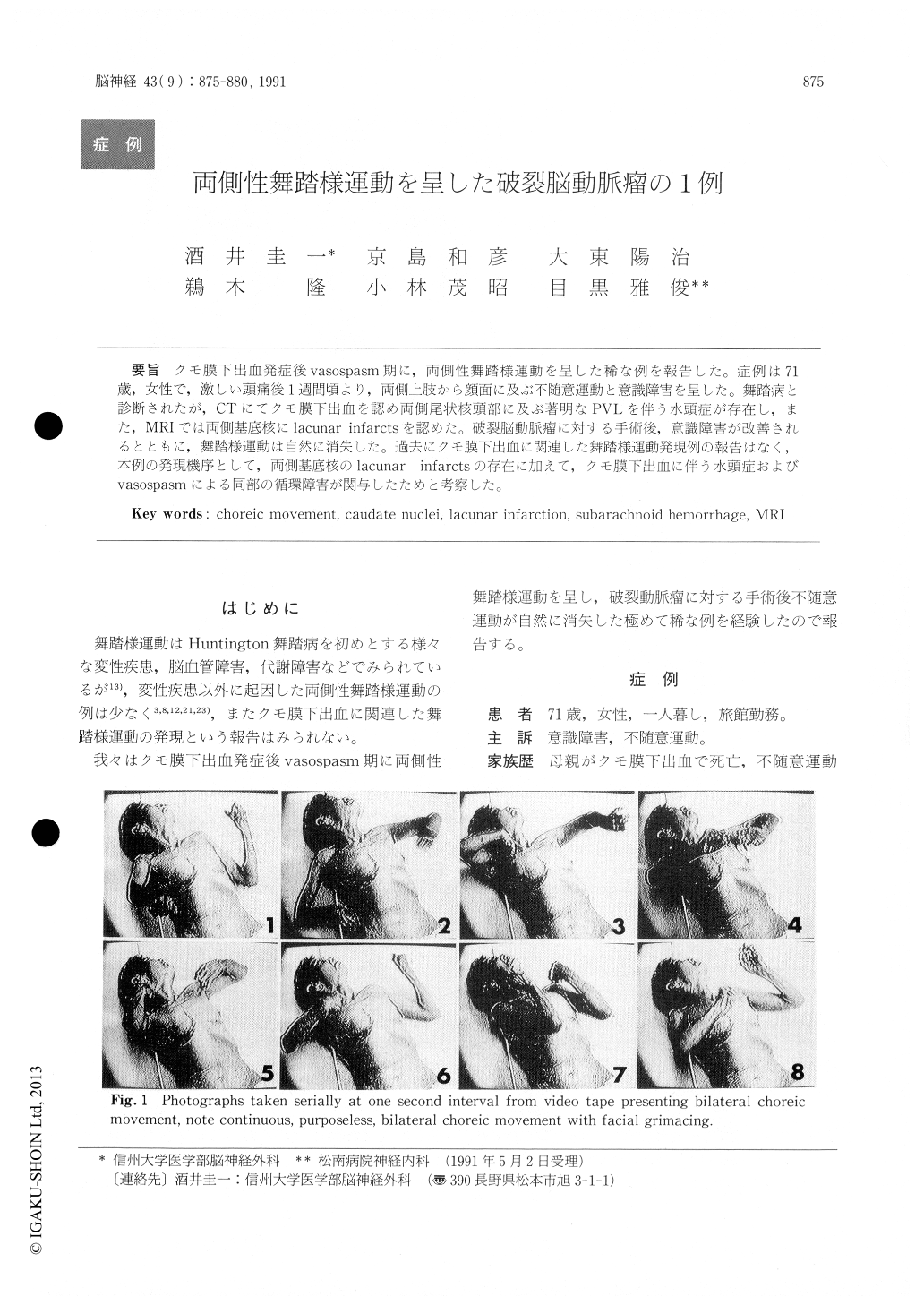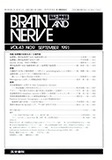Japanese
English
- 有料閲覧
- Abstract 文献概要
- 1ページ目 Look Inside
クモ膜下出血発症後vasospasm期に,両側性舞踏様運動を呈した稀な例を報告した。症例は71歳,女性で,激しい頭痛後1週間頃より,両側上肢から顔面に及ぶ不随意運動と意識障害を呈した。舞踏病と診断されたが,CTにてクモ膜下出血を認め両側尾状核頭部に及ぶ著明なPVLを伴う水頭症が存在し,また,MRIでは両側基底核にlacunar infarctsを認めた。破裂脳動脈瘤に対する手術後,意識障害が改善されるとともに,舞踏様運動は自然に消失した。過去にクモ膜下出血に関連した舞踏様運動発現例の報告はなく,本例の発現機序として,両側基底核のlacllnar infarctsの存在に加えて,クモ膜下出血に伴う水頭症およびvasospasmによる同部の循環障害が関与したためと考察した。
A case of generalized choreic movement associat-ed with subarachnoid hemorrhage is reported.
A 71 year-old hypertensive woman suddenly de-veloped severe headache 14 days before admission. Consciousness disturbance and involuntary move-ment involving the face and upper extremities appeared about 8 days after onset. The involuntary motion was diagnosed as generalized choreic move-ment. CT scans showed subarachnoid hemorrhagewith ventricular dilatation and periventricular lucency involving bilateral caudate nuclei. On admission the patient was stuporous with Hunt & Kosnik Grade 4. She showed involuntary choreic movement in both arms, trunk and face ; hemipar-enis and hyperrefrexia were absent. An angiogra-phy revealed a right internal carotid-anterior chor-oidal artery aneurysm with vasospasm. After clip-ping the aneurysm in the following day, the con-sciousness disturbance and choreic movement grad-ually improved. By eight days after operation, the choreic movement completely disappeared. An MRI showed lacunar infarcts in the bilateral basal ganglia, predominantly in the caudate nuclei. In our case, the choreic movement is supposed to have been caused by impaired circulation in the bilateral corpora striata due to vasospasm and hydroce-phalus after subarachnoid hemorrhage, in addition to the preexisting lacunar infarcts in the basal ganglia. This is claimed to be the first reported case of generalized choreic movement in associated with subarachnoid hemorrhage, which improved after surgery.

Copyright © 1991, Igaku-Shoin Ltd. All rights reserved.


